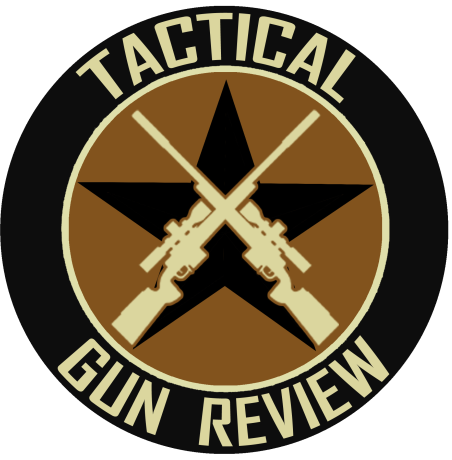As I spend more time carrying my gear in the woods, I find myself drawn to a belt-and-suspenders type of setup. There’s a place for chest rigs, but bulging pouches stuffed with magazines (and everything else under the sun) can be a drag. The weight slows you down, saps your strength and reminds you how out of shape you are. Lots of gear on your chest can also press in on your rib cage, making labored breathing on the trail more difficult.
After using Blue Force Gear’s Ten-Speed M4 Chest Rig, I went looking for a similarly lightweight belt and suspenders set. The real impetus behind my search was the urging of my brother and our mutual friend, both with considerably more hiking and outdoors experience than I have. My baby brother (who is a full head taller than I) hiked the AT as a kid and continues as an adult. It’s one of his passions.

A poorly lit photograph showing the BELTminus next to WWII-era LCE. This was early on in the testing. Notice the M-12 holster.
Our friend Rufus (a nom de guerre) is a former 10th Cav vet. Both he and my brother prefer an old ALICE belt-and-suspender setup, though Rufus had a WWII-era belt until I provided him an upgrade to an Austrian web belt. He only replaced his old M-1923 cartridge belt because the canvas thing was practically falling apart. Both he and my brother always seemed to carry less weight and be more comfortable than I on our outings. I wanted to emulate their lightweight approach and simultaneously be able to have my gears’ weight distributed to my hips rather than hanging on my shoulders.
I looked high and low, considering different “battle belts” and even thought of purchasing an old set of ALICE gear. Then I saw a SHOT Show video preview of the BELTminus by Blue Force Gear. A new take on LBE with webbing that is half the thickness of a dime and weighs less than a butterfly’s fart? Be still my beating heart. The BELTminus embodies the term lightweight. It’s a grand total of 9 ounces, which makes it less than half the weight of BFG’s SOC-C Modular Padded Belt System. The old LC-2 suspenders alone weighed 8oz.
During my evaluation, I placed the BFG gear on my digital scale in order to record the weight. I was rather surprised to see that the weight of the BELTminus with BFG pouches is EXACTLY what the weights listed on their website add up to. It’s right down to the gram. I honestly would have expected some small variation, but the manufacturing process they use (and their quality control) must be impeccable.
The attention to detail this shows is impressive. The BELTminus is made of ULTRAcomp, a proprietary laminate stronger than 1000 Cordura and possessing abrasion resistance four times greater than air textured nylon. BFG claims that it can withstand hard use, but we’ll see if it lives up to the hype later in the article. Ultracomp is fast-drying, which doesn’t seem like a big deal until you get it soaking wet with sweat. Anything that sheds water weight while also helping me keep cool is a winner in my book.
So it’s super lightweight and the QC is incredibly exact. If it doesn’t hold up to idiotic abuse, then it’s just something pretty to show off to the boys at the range. Luckily for BFG, I abuse my equipment idiotically with alarming regularity. But I ease into it. The first thing I did was to go out on my least favorite section of the Appalachian Trail with the BELTminus carrying a medium load. No problems there.
In fact, I was blown away at how natural everything felt. It didn’t really feel like I was wearing LBE at all. I found myself missing the feel of a thick, nylon belt. A few miles later, when I realized that I couldn’t feel the BELTminus digging into my hips or causing me discomfort, the nostalgic pining for an old LC-2 disappeared completely. The next hike took me through heavy brush, often bushwacking with my khukuri. I had no problems with bushes or branches catching on my gear.
The BELTminus hugged my body and distributed my gear’s weight admirably, even when in a full-out run. In an effort to induce failure (I like to break things) in the system, I began adding weight. Though a knife is common to see on a belt rig, I prefer a khukri. Specifically, I carry a Sirupate khukuri when out in the woods. It can serve as a knife, a hatchet and a machete all in one. Naturally, it had to go onto the BELTminus, though the traditional sheath would not attach to MOLLE webbing. I ended up tying it on to the BELTminus using the broken strap of a boonie hat. Not really a good idea. I’ll have to fix that soon.
Blue Force Gear was pretty clear that the BELTminus was never intended to handle a pistol holster. In fact, several people tried to dissuade me from mounting a holster. Being pig-headed, I ignored them. Honestly, I understand that the BELTminus is light and easily pliable, but I really didn’t want to add a drop-leg holster to my setup. The whole point of a belt-and-suspenders rig is that you can have your gear all on one system. It’s easy to put on and take off and keeps everything simple. So to hell with wiser heads, I wanted my SIG on my belt.
Initially, I mounted a surplus M-12 holster. Unfortunately, this was set up for an old ALICE belt, not MOLLE. I ended up moving the M-12 back to a web belt I own, where it works very well. Eventually, I went with a modular tactical holster by Specter Gear. Though I’ve had luck with universal holsters, there’s always some slop and wiggle. Not so with Specter. They sew their holsters to specific pistols. More on their holster in an upcoming review.
Blue force Gear markets a configuration of the BELTminus that has pouches for 8 loaded AR-15 magazines, a trauma kit and two utility pouches. Assuming you have water in one utility pouch and heavier, solid items in the other, you’re looking at a load of about 12 pounds. So of course, I loaded mine up with as much weight as I could. When all was said and done, I had three loaded AR magazines, two loaded SIG mags, a Sirupate Khukuri, 100 feet of 550 cord on a Petzl AM’D screw-lock carabiner, and a loaded SIG P226 in a Specter holster. In lieu of the BFG horizontal utility pouch, I attached a much larger Flecktarn gas mask pouch by TacGear. It holds:
- First Care Trauma, Wound Dressing
- Band-Aids and a small ace bandage
- Latex gloves
- Tube of antibiotic ointment
- Waterproof tape – for taping my feet when hiking
- Re-hydration salts – actually Russian in manufacture. A Kazakh paratrooper gave them to me in FOB Delta, in Iraq.
- Beef Ravioli in Meat Sauce – from an MRE I got in Iraq, 2008. Carrying this around with the intention of consuming it is probably a bad idea.
- Two small glowsticks
- Small tube of Froglube paste
- Magpul MBUS front sight adjustment tool
- Batteries,
- Disposable lighters
- Dryer lint in a sealed plastic bag
- Headlamp
- Compass
- Hatch gloves
- Triple Aught Design Ranger Jacket LT
For hydration, I added an old CamelBak 3 liter bladder. The straps for the CamelBak (and even the tube) fit very nicely through the shoulder pads. With a bit of tinkering, I integrated my nasty old CamelBak (originally desert camo confiscated from an Iraqi and later painted for the woods) and my BELTminus. This added another 7.5 pounds (when full), for a total of 21lbs. I opted for the enhanced padding, though initially I didn’t need it.
When running a minimalist setup, the shoulder pads are downright superfluous. However, when I added a large butt-pouch, holstered P226, khukuri and integrated a 3L Camelbak, the pads proved quite appropriate. I hiked in this. I bushwhacked with it. I high-crawled, low-crawled, and ran through carbine drills. As a side note, it hurts when gear digs into your belly. I even climbed over a wall in effort to get the damn thing to tear. Interestingly, it stayed in one piece.
Ten-Speed Squeeze
When squatting, kneeling and even hiking, I noticed that the shifting of my hips would press against the base of the Ten Speed Triple M4 mag pouch and slowly squeeze the AR magazines up towards the top. I had to occasionally push the magazines back down into the bottom of the pouch. This same phenomenon was also evident (and in fact worse) in the Ten-Speed double pistol mag pouch. In addition, the construction of the Ten-Speed naturally makes the magazines ride high.
Consequently, they dig into your belly and ribs when you are crouching, Having to push the AR mags down every once in a while was an annoyance, but I almost lost a magazine for my SIG P226 when it fell out during a nighttime bushwhacking expedition. I was squatted down by a tree and the pressure of my thigh squeezed the magazine fully out of the pouch. I heard and felt it fall, and luckily was able to retrieve it. But this could have been a costly learning experience.
I recommend using the BFG Single Pistol Mag Pouch, with its Velcro closure. Neither the M4 Triple mag pouch nor the double pistol mag pouch exhibited this problem when attached to a firmer baking, such as a plate carrier. My expectation is that this problem is unique to the BELTminus/Ten-Speed combination. If using a padded belt such as Blue Force’s SOC-C, the padding should keep the user’s hips from directly pressing against the bottom of the Ten-Speed mag pouch. I expect that Blue Force Gear is already aware of this minor problem, as they market the BELTminus with their Double M4 Mag Pouch instead of their Ten-Speed Double M4 Mag Pouch.
Conclusion
Many of the improvements I’d like to see simply aren’t possible. I’d like to be able to attach my khukuri to the belt as sub-load style attachment. Without an inner belt, this simply isn’t an option. I’m going to design a better frog (the part of the sheath that allows it to hang vertically from the belt) in order to be able to attach my khukuri to MOLLE gear. Though it would add slightly to the weight, I’d love to see BFG design a way to modularly integrate a hydration bladder with the BELTminus.
The issues with the Ten-Speed pouches are easily avoided by simply using standard BFG Double M4 mag pouches and a pair of Single Pistol Mag Pouches. The BELTminus is not a complete replacement for a padded MOLLE belt, but then again, it’s not meant to be. It’s designed for use in hot, humid climates. It’s thin, light and surprisingly strong. It excels in its role as a lightweight LCE and I recommend it highly.
-By Allen Cosby
Latest posts by 53gr (see all)
- H&H Medical: H Bandage and Thin H Bandage - January 2, 2020
- S&W M&P M2.0 Series - January 9, 2017
- SIG Sauer P938 - October 19, 2016







Recent Comments